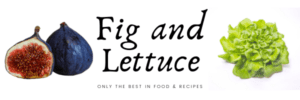Beginners Healthy Eating Grocery List – Easy
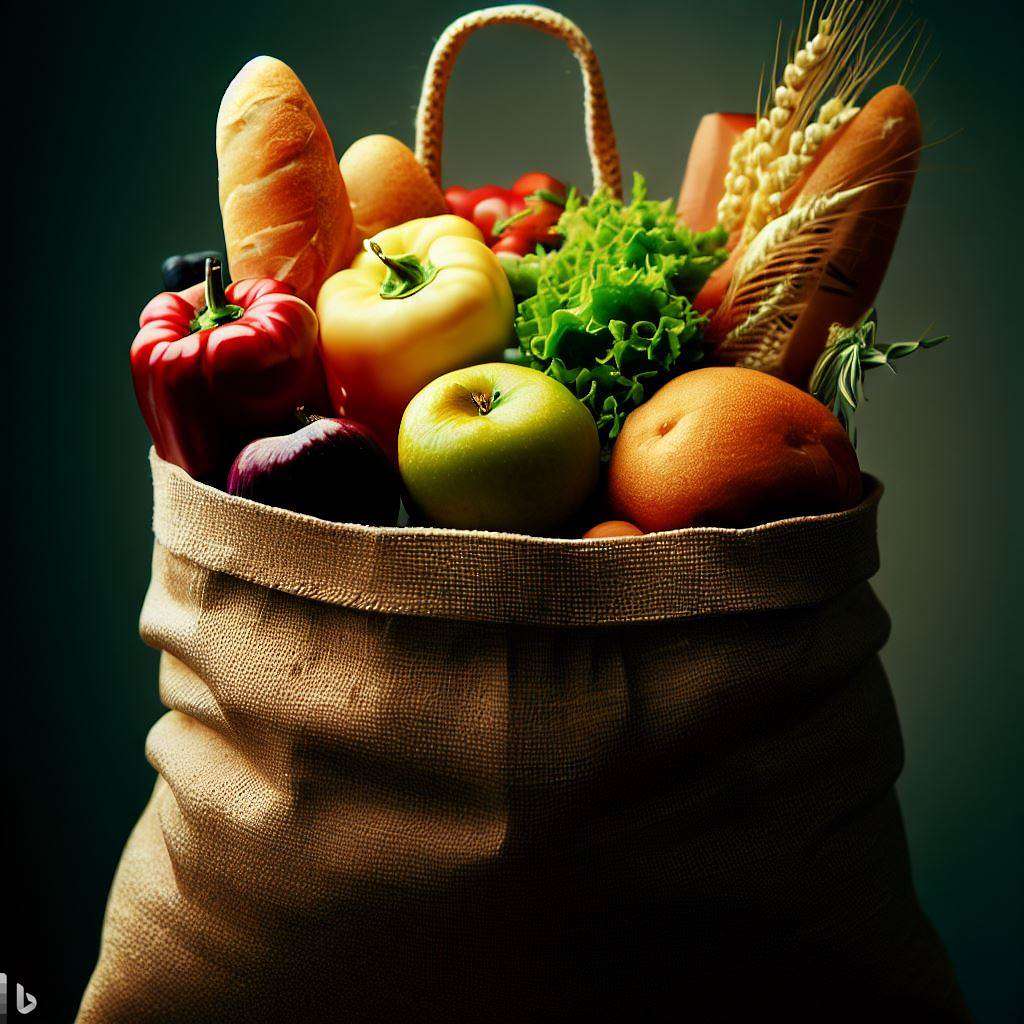
Beginners Healthy Eating Grocery List
Creating a healthy eating grocery list is an essential step in maintaining a nutritious diet, we’ve put together everything you need to get started with the beginners healthy eating grocery list.
Find out more about eating healthy here How to Start Eating Healthy with information about nutrition and a meal plan!
Here are foods to include when creating a beginner’s healthy eating grocery list:
Foods to Include in a Healthy Grocery List
Fresh Fruits:
Apples, bananas, berries, oranges, grapes, etc.
Fresh Vegetables:
Leafy greens such as spinach, kale, and lettuce, as well as broccoli, cauliflower, carrots, cucumbers, bell peppers, etc.
Whole grains:
Brown rice, quinoa, oats, whole wheat bread or wraps, whole grain pasta.
Lean proteins:
Chicken breast, turkey breast, fish (salmon, tuna), eggs, tofu, legumes (lentils, chickpeas, black beans), and Greek yogurt.
Healthy fats:
Avocados, nuts (almonds, walnuts, cashews), seeds (chia, flaxseed), olive oil.
Dairy or dairy alternatives:
Low-fat milk, unsweetened almond milk, low-fat Greek yogurt, low-fat cottage cheese.
Canned goods:
Canned beans (black beans, kidney beans, chickpeas), canned tuna, or salmon.
Frozen fruits and vegetables:
Berries, mixed vegetables, spinach, peas.
Herbs and spices:
Basil, oregano, rosemary, turmeric, cinnamon, black pepper.
Condiments and sauces:
Mustard, salsa, low-sodium soy sauce, balsamic vinegar, olive oil-based dressings.
Snacks:
Raw nuts, seeds, dried fruits (unsweetened), rice cakes, popcorn (air-popped), and dark chocolate (70% cocoa or higher).
Beverages:
Water, herbal tea, green tea, unsweetened coffee, sparkling water.
Other essentials:
Garlic, onions, low-sodium vegetable or chicken broth, natural nut butter (peanut butter, almond butter), and natural sweeteners (honey, maple syrup).
Tips
Remember, this is just a starting point, and you can customize the list based on your preferences and dietary needs. When shopping, prioritize whole, unprocessed foods and read food labels to check for added sugars, unhealthy fats, and excessive sodium. It’s also helpful to plan your meals in advance to ensure you have the necessary ingredients on hand for healthy and balanced meals throughout the week.
Download or print our handy Beginners Healthy Eating Grocery List
Grocery List Guide: Beginners Healthy Eating Grocery List

Here’s a simple guide to assist you in creating your own beginners healthy eating grocery list:
1. Plan Your Meals
Before making your grocery list, plan out your meals for the week, this will help you determine what ingredients you need and avoid impulse buying.
2. Include a Variety of Fruits and Vegetables
Include a variety of fruits and vegetables: Aim to include a diverse range of fresh fruits and vegetables in your list. Choose different colors and types to ensure you’re getting a wide array of nutrients. Opt for both staples like leafy greens, broccoli, and carrots, as well as seasonal produce.
3. Prioritize Whole Grains
Add whole grains to your list, such as brown rice, quinoa, whole wheat bread or pasta, oats, and barley. These provide fiber, vitamins, minerals, and sustained energy.
Include Lean Proteins
Choose lean sources of protein like skinless chicken breast, turkey breast, fish (salmon, tuna), eggs, tofu, legumes (lentils, chickpeas, black beans), and low-fat dairy products.
This helps meet your protein needs without excessive saturated fats.
Don’t Forget Healthy Fats
Incorporate healthy fats into your list, such as avocados, nuts such as almonds, walnuts, cashews, seeds like chia or flaxseed, and olive oil. These fats are essential for your body and can support heart health.
Choose Low-fat Dairy or Alternatives
If you consume dairy, include low-fat milk, Greek yogurt, and low-fat cottage cheese on your list. If you prefer dairy alternatives, choose unsweetened almond milk or soy milk.
Check Your Pantry
Take a look at your pantry and check for staple items like spices, herbs, cooking oils, and condiments. Add any necessary items to your list to ensure you have everything you need for meal preparation.
Include Healthy Snacks
Add healthy snack options to your list, such as raw nuts, seeds, fresh fruits, yogurt, hummus, whole grain crackers, and dark chocolate (in moderation).
Don’t Forget Hydration
Include water, herbal tea, and other low-sugar beverages on your list to stay well-hydrated throughout the day.
Consider Your Lifestyle and Preferences
Tailor your list to your dietary needs, lifestyle choices, and personal preferences. If you have specific dietary restrictions or follow a particular eating plan (e.g., vegetarian, gluten-free), ensure your list accommodates those requirements.
Stick to the Perimeter of the Store
When you’re at the grocery store, focus on shopping the perimeter where fresh produce, lean proteins, dairy products, and whole grains are typically located. This can help you avoid processed and unhealthy foods found in the middle aisles.
Read Labels
When choosing packaged foods, read the labels and ingredient lists. Look for items with minimal additives, added sugars, and unhealthy fats.
Stick to Your List
Finally, when you go shopping, try to stick to your list as much as possible to avoid impulse buying and stay on track with your healthy eating goals.
By following these steps, you can create a well-rounded and nutritious grocery list that supports your healthy eating habits.
Download or print our handy Beginners Healthy Eating Grocery List
Fresh Fruits

When it comes to fresh fruits, there are numerous options to choose from. Here are some popular and nutritious fruits to include in your grocery list:
- Apples: Apples are a versatile fruit that comes in a variety of flavors and textures. They are a good source of fiber and vitamin C.
- Bananas: Bananas are convenient and packed with potassium, vitamin B6, and dietary fiber. They are a great addition to smoothies, oatmeal, or as a quick on-the-go snack.
- Berries: Strawberries, blueberries, raspberries, and blackberries are all rich in antioxidants and vitamin C. They can be enjoyed on their own, added to yogurt, or used in smoothies and salads.
- Oranges: Oranges are known for their high vitamin C content, they are also a good source of dietary fiber and provide hydration.
- Grapes: Grapes are a refreshing and sweet fruit that comes in different colors. They are rich in antioxidants and can be eaten fresh or frozen as a snack.
- Pineapple: Pineapple is a tropical fruit with a tangy flavor. It contains bromelain, an enzyme that aids in digestion. Pineapple can be enjoyed fresh, added to fruit salads, or used in smoothies.
- Kiwi: Kiwi is a small fruit packed with vitamin C, vitamin K, and dietary fiber. Its unique taste and vibrant green color make it a popular choice.
- Mango: Mangoes are sweet and juicy tropical fruits. They are a good source of vitamin C and vitamin A. Mangoes can be enjoyed fresh or used in smoothies, salsas, or desserts.
- Watermelon: Watermelon is hydrating and refreshing, making it an excellent choice during hot weather. It contains vitamins A and C and is low in calories.
- Pears: Pears are a delicious and juicy fruit that provides dietary fiber and vitamin C. They can be eaten fresh or added to salads and baked goods.
Tips
Remember to select fruits that are firm, vibrant in color, and free from bruises or blemishes. Incorporating a variety of fresh fruits into your diet will provide you with essential vitamins, minerals, antioxidants, and fiber for overall health and well-being.
Download or print our handy Beginners Healthy Eating Grocery List
Fresh Vegetables
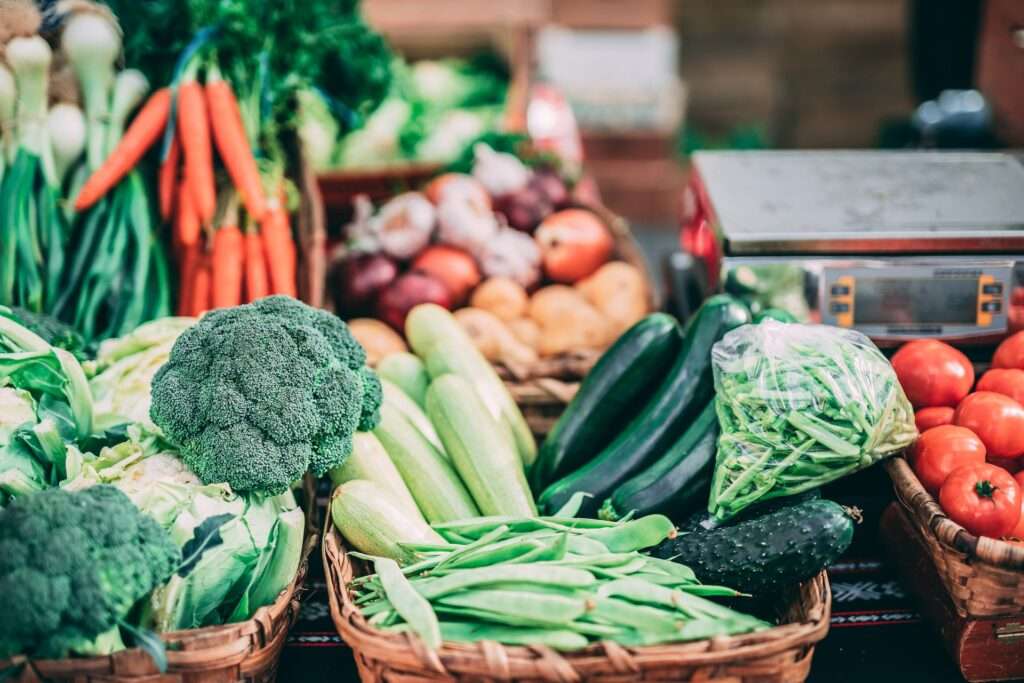
When it comes to fresh vegetables, there are numerous options to choose from. Here are some popular and nutritious vegetables to include in your grocery list:
Leafy Greens:
- Spinach
- Kale
- Swiss chard
- Romaine lettuce
- Arugula
Cruciferous Vegetables:
- Broccoli
- Cauliflower
- Brussels sprouts
- Cabbage
Root Vegetables:
- Carrots
- Sweet potatoes
- Beets
- Radishes
- Turnips
Colorful Vegetables:
- Bell peppers (red, yellow, orange)
- Tomatoes
- Eggplant
- Zucchini
- Squash (butternut, acorn)
Allium Vegetables:
- Onions
- Garlic
- Shallots
- Leeks
- Scallions
Other Vegetables:
- Cucumbers
- Celery
- Green beans
- Asparagus
- Mushrooms
Tips
When selecting fresh vegetables, look for firm, vibrant-colored options. Avoid vegetables that are bruised, wilted, or have signs of decay. Additionally, consider choosing organic or locally sourced vegetables when available.
Remember to store your vegetables properly to maintain their freshness. Some vegetables are best stored in the refrigerator, while others can be stored at room temperature. Proper storage can help extend their shelf life.
Incorporating a variety of fresh vegetables into your meals is an excellent way to ensure you’re getting a wide range of vitamins, minerals, fiber, and antioxidants. You can enjoy them raw in salads, steam them, roast them, stir-fry them, or add them to soups and stews. Experiment with different cooking methods and flavor combinations to keep your meals interesting and flavorful.
Download or print our handy Beginners Healthy Eating Grocery List here….
Whole Grains
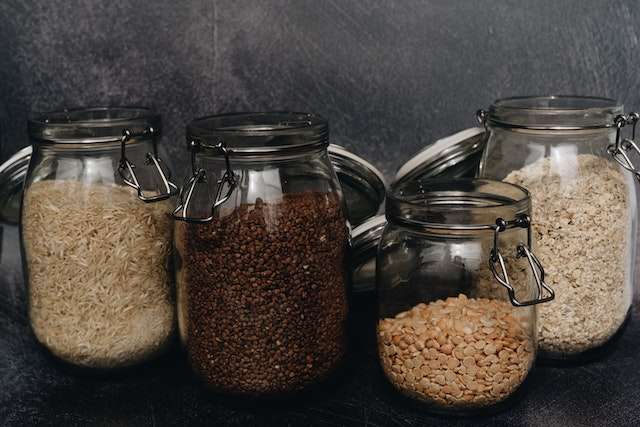
Including whole grains in your diet is a great way to add fiber, essential nutrients, and sustained energy to your meals. Here are some popular whole grains to consider adding to your grocery list:
- Brown rice: Brown rice is a nutritious alternative to white rice. It contains the whole grain, including the bran and germ, which provide fiber, vitamins, and minerals.
- Quinoa: Quinoa is a versatile grain that is packed with protein, fiber, and various nutrients. It cooks quickly and can be used as a base for salads, stir-fries, or as a side dish.
- Oats: Oats are a nutritious whole grain that can be enjoyed as oatmeal or used in baking. They are high in fiber and provide sustained energy. Choose steel-cut oats or rolled oats instead of instant varieties for more nutritional value.
- Whole wheat bread: Look for bread that is labeled “100% whole wheat” or “whole grain” to ensure it contains the whole grain and not refined flour. Whole wheat bread can be used for sandwiches, toast, or as a side with meals.
- Whole wheat pasta: Replace refined pasta with whole wheat pasta, which retains more fiber and nutrients. It can be used in various pasta dishes and is a healthier choice.
- Barley: Barley is a nutritious whole grain with a nutty flavor. It can be used in soups, stews, or as a side dish. Barley provides fiber, protein, and several vitamins and minerals.
- Bulgur: Bulgur is a type of cracked wheat that is commonly used in Middle Eastern and Mediterranean cuisines. It cooks quickly and can be used in pilafs, salads, or as a base for grain bowls.
- Millet: Millet is a gluten-free grain that is rich in fiber and antioxidants. It can be used as a side dish, in porridge, or as an ingredient in baking.
- Whole grain cereals: Look for cereals that are made from whole grains and have minimal added sugars. Read the labels and choose options with a short ingredient list.
- Whole grain tortillas or wraps: Opt for whole grain tortillas or wraps instead of refined flour versions. They can be used for sandwiches, wraps, or as a base for pizza crusts.
Tips
When shopping for whole grains, check the ingredient list to ensure that the product is made from 100% whole grains and doesn’t contain refined flour or added sugars. Incorporate these whole grains into your meals to enjoy their health benefits and add variety to your diet.
Download or print our handy Beginners Healthy Eating Grocery List here….
Lean Proteins
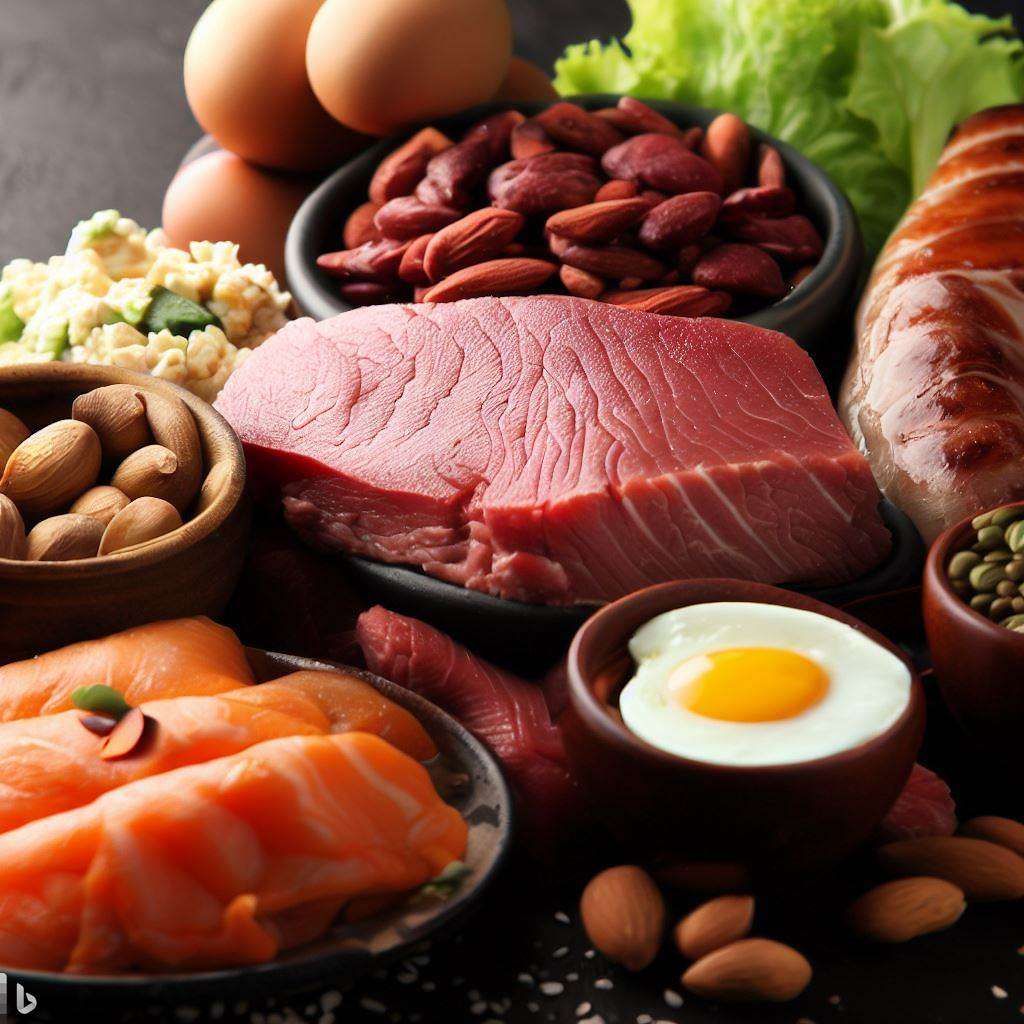
Including lean proteins in your diet is important for building and repairing tissues, supporting muscle growth, and providing essential amino acids. Here are some options for lean proteins to add to your grocery list:
- Skinless chicken breast: Chicken breast is a lean source of protein that is versatile and can be prepared in various ways, such as grilling, baking, or sautéing.
- Turkey breast: Turkey breast is another lean protein option that can be used as an alternative to chicken. It can be used in sandwiches, salads, or cooked as a main dish.
- Fish: Fish such as salmon, tuna, trout, and cod are excellent sources of lean protein and heart-healthy omega-3 fatty acids. Aim to include fatty fish at least twice a week.
- Eggs: Eggs are a budget-friendly and versatile protein option. They can be boiled, scrambled, poached, or used in omelets and baked goods.
- Greek yogurt: Greek yogurt is a protein-rich option that can be enjoyed on its own or used as a base for smoothies, parfaits, or as a substitute for sour cream in recipes.
- Tofu: Tofu is a plant-based protein source that is low in fat and high in protein. It can be marinated and added to stir-fries, salads, or grilled as a meat substitute.
- Lentils: Lentils are a legume that is rich in protein, fiber, and various nutrients. They can be used in soups, stews, salads, or as a meat alternative in dishes like lentil burgers.
- Chickpeas: Chickpeas, also known as garbanzo beans, are versatile legumes that can be used in salads, roasted for a crunchy snack, or pureed into hummus.
- Cottage cheese: Cottage cheese is a low-fat dairy option that is high in protein. It can be enjoyed on its own, mixed with fruits, or used in savory dishes like salads or lasagna.
- Lean cuts of beef: If you consume beef, choose lean cuts such as sirloin, tenderloin, or eye of round. Trim visible fat before cooking to keep it lean.
Tips
Remember to balance your protein sources with a variety of other nutrients from fruits, vegetables, whole grains, and healthy fats for a well-rounded diet. Adjust the portion sizes based on your individual needs and consult with a healthcare professional or registered dietitian for personalized advice.
Download or print our handy Beginners Healthy Eating Grocery List here….
Healthy Fats
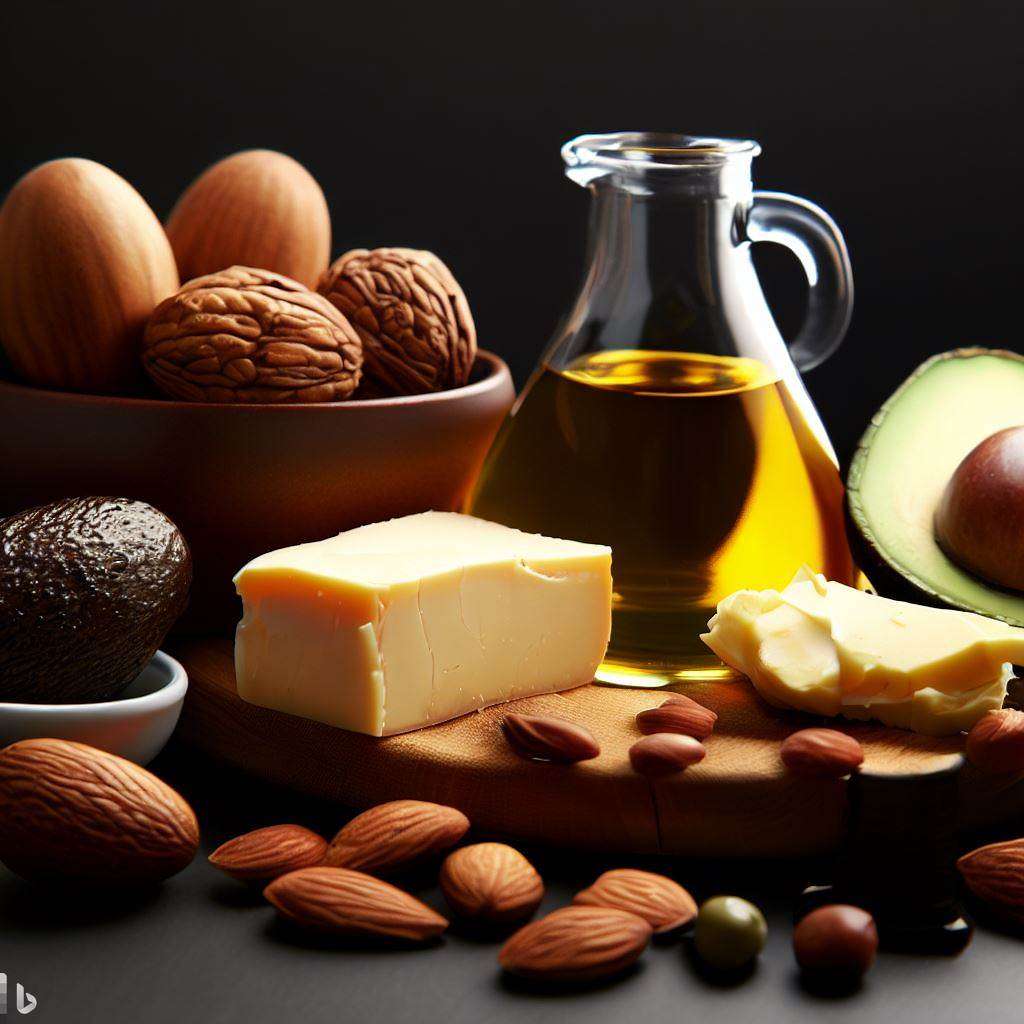
Incorporating healthy fats into your diet is important for overall health, as they provide energy, support cell function, help absorb fat-soluble vitamins, and promote brain health. Here are some options for healthy fats to consider adding to your grocery list:
- Avocado: Avocado is a nutrient-rich fruit that is high in monounsaturated fats, which are heart-healthy fats. Enjoy sliced avocado in salads, sandwiches, or as a topping for toast.
- Nuts: Nuts, such as almonds, walnuts, cashews, and pistachios, are excellent sources of healthy fats, fiber, and various vitamins and minerals. They can be enjoyed as a snack, added to salads, or used as a topping for yogurt or oatmeal.
- Seeds: Seeds like chia seeds, flaxseeds, hemp seeds, and pumpkin seeds are rich in omega-3 fatty acids, fiber, and antioxidants. Sprinkle them on top of smoothies, yogurt, or salads for an added nutritional boost.
- Extra Virgin Olive Oil: Extra virgin olive oil is a monounsaturated fat that is commonly used in cooking or as a dressing for salads. Choose high-quality, cold-pressed olive oil for its rich flavor and health benefits.
- Fatty Fish: Fatty fish like salmon, mackerel, sardines, and trout are excellent sources of omega-3 fatty acids. Aim to include them in your diet a few times a week to support heart health and brain function.
- Nut Butter: Natural nut butters, such as almond butter or peanut butter, provide healthy fats and protein. Look for varieties without added sugars or hydrogenated oils and enjoy them on whole grain bread, with fruit, or in smoothies.
- Olives: Olives and olive products, like olive tapenade or olive oil, contain monounsaturated fats and antioxidants. Add them to salads, pasta dishes, or enjoy them as a snack.
- Coconut and Coconut Oil: Coconut and coconut oil contain saturated fats but can still be part of a healthy diet in moderation. Use coconut oil for cooking or baking, and enjoy unsweetened coconut flakes as a topping for yogurt or smoothies.
- Dark Chocolate: Dark chocolate with a high cocoa content (70% or more) contains monounsaturated fats and antioxidants. Enjoy a small piece as an occasional treat.
Tips
Remember that while healthy fats are beneficial, they are also high in calories. Be mindful of portion sizes and balance your intake with other nutrients. Consult with a healthcare professional or registered dietitian for personalized recommendations based on your specific dietary needs.
Download or print our handy Beginners Healthy Eating Grocery List here….
Dairy or Dairy Alternatives

When it comes to dairy or dairy alternatives, it’s important to consider your personal preferences, dietary restrictions, and nutritional needs. Here are some options to consider when adding dairy or dairy alternatives to your grocery list:
Dairy:
- Milk: Choose low-fat or skim milk if you prefer dairy milk. If you don’t have lactose intolerance or dairy allergies, opt for cow’s milk or goat’s milk. However, if you’re lactose intolerant or follow a plant-based diet, there are many dairy alternatives available.
- Greek Yogurt: Greek yogurt is a protein-rich option that can be enjoyed as a snack, in smoothies, or as a substitute for sour cream in recipes. Choose low-fat or non-fat varieties.
- Cheese: If you consume cheese, opt for lower-fat options such as reduced-fat cheddar, mozzarella, or feta. Use cheese in moderation due to its higher calorie and fat content.
- Cottage Cheese: Cottage cheese is a protein-rich option that can be enjoyed on its own, mixed with fruits, or used in savory dishes like salads or lasagna.
Dairy Alternatives:
- Plant-Based Milk: There are various plant-based milk alternatives available, such as almond milk, soy milk, oat milk, coconut milk, or rice milk. Choose unsweetened versions fortified with calcium and vitamin D. Select the one that suits your taste preferences and dietary needs.
- Plant-Based Yogurt: Plant-based yogurts made from almond milk, soy milk, coconut milk, or other plant sources are great alternatives for those who don’t consume dairy. Look for options with minimal added sugars and fortified with nutrients like calcium and vitamin D.
- Non-Dairy Cheese: Non-dairy cheese alternatives made from nuts, soy, or other plant sources can be used as a substitute for dairy cheese. Experiment with different brands and types to find those that suit your taste preferences.
- Non-Dairy Ice Cream: Non-dairy ice cream made from almond milk, coconut milk, or other plant-based ingredients is a delicious alternative to traditional ice cream for those who are lactose intolerant or follow a vegan diet.
Tips
Remember to check the labels of dairy alternatives to ensure they are fortified with essential nutrients like calcium and vitamin D, as these are important for bone health. It’s also a good idea to select options with minimal added sugars and artificial additives.
Consider consulting with a healthcare professional or registered dietitian for personalized advice based on your specific dietary needs and preferences.
Download or print our handy Beginners Healthy Eating Grocery List here….
Canned Goods
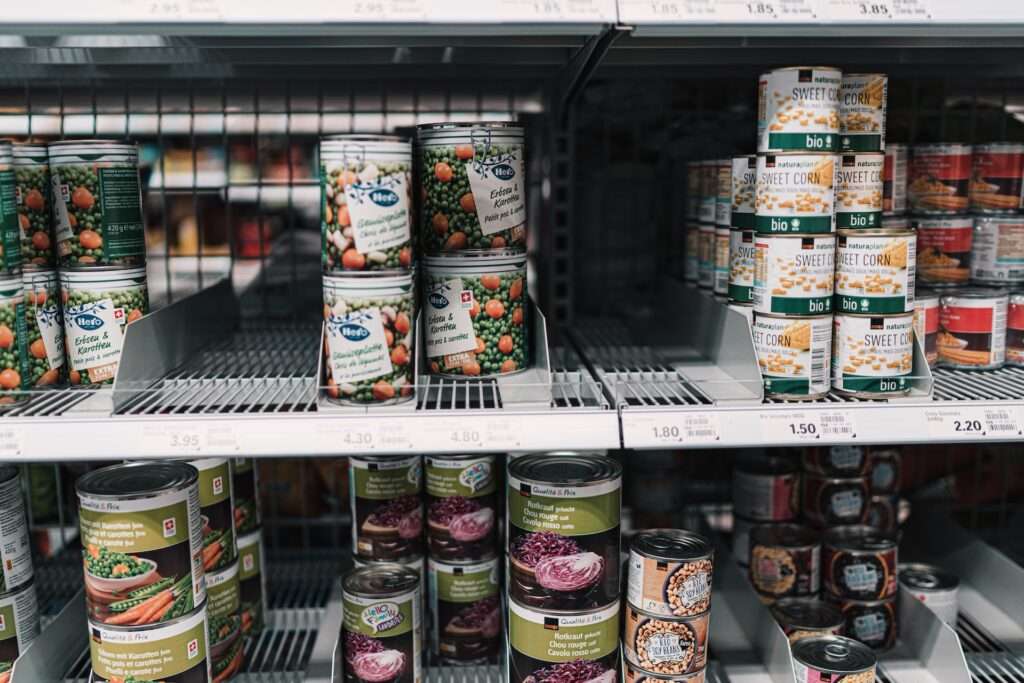
Canned goods can be a convenient and versatile addition to your grocery list. They can provide long shelf life and are often budget-friendly. Here are some healthy canned goods to consider:
- Canned Beans: Beans like black beans, chickpeas, kidney beans, and lentils are great sources of protein, fiber, and minerals. They can be added to salads, soups, stews, or used as a base for vegetarian patties.
- Canned Tuna or Salmon: Canned tuna or salmon are excellent sources of lean protein and omega-3 fatty acids. Choose options packed in water or olive oil rather than those packed in heavy sauces.
- Canned Tomatoes: Canned tomatoes, including diced, crushed, or whole tomatoes, are versatile and can be used in various recipes like pasta sauces, soups, stews, or chili.
- Canned Vegetables: Opt for low-sodium varieties of canned vegetables like corn, green beans, peas, or carrots. They can be added to stir-fries, soups, or used as a side dish.
- Canned Fruit: Choose canned fruits packed in water or their own juice rather than heavy syrup, which can be high in added sugars. Canned fruits like pineapple, peaches, or pears can be enjoyed on their own, added to yogurt, or used in baking.
- Canned Pumpkin: Canned pumpkin puree is a nutritious option that can be used in baking, smoothies, or as a base for soups and sauces.
- Canned Coconut Milk: Canned coconut milk can add richness and flavor to curries, soups, or smoothies. Look for varieties without added sugars or additives.
Tips
When selecting canned goods, read the labels to check for added sugars, sodium content, and the quality of ingredients. Choose low-sodium or no-salt-added options whenever possible, and rinse canned beans and vegetables under water to reduce sodium levels further.
While canned goods can be a convenient option, fresh or frozen alternatives are often higher in nutritional value. However, having a stock of canned goods can be useful for emergencies or when fresh options are not readily available.
Remember to incorporate a variety of fresh, whole foods into your diet along with canned goods to ensure a well-rounded and balanced approach to nutrition.
Download or print our handy Beginners Healthy Eating Grocery List here….
Frozen Fruit & Vegetables

Frozen fruits and vegetables are an excellent option for adding nutrition to your diet, even when fresh produce is not readily available. Here are some reasons to include frozen fruits and vegetables in your grocery list:
- Nutrient Retention: Frozen fruits and vegetables are typically picked at peak ripeness and immediately frozen, which helps retain their nutrients. The freezing process preserves vitamins, minerals, and antioxidants, making them a healthy choice.
- Convenience and Availability: Frozen fruits and vegetables are available year-round and can be stored for a longer time compared to fresh produce. They are pre-washed, pre-cut, and ready to use, saving you time in meal preparation.
- Cost-Effective: Frozen fruits and vegetables are often more affordable than their fresh counterparts, especially when certain fruits and vegetables are out of season.
- Versatility: Frozen fruits and vegetables can be used in a variety of ways. They can be added to smoothies, used in baking, cooked in stir-fries or soups, or enjoyed as a side dish.
- Reduced Food Waste: With frozen produce, you can use only what you need and keep the rest for future use, reducing the risk of food waste.
When purchasing frozen fruits and vegetables, consider the following tips:
- Check for Unsweetened Options: Look for frozen fruits that are unsweetened, without added sugars or syrups. This allows you to control the amount of sweetness in your dishes.
- Choose Plain Vegetables: Opt for plain frozen vegetables without added sauces or seasonings. This gives you more flexibility in flavoring them to suit your taste preferences.
- Read Labels: Check the ingredient list to ensure there are no unwanted additives or preservatives. Aim for options with a short and recognizable ingredient list.
- Proper Storage: Once you bring frozen fruits and vegetables home, store them in your freezer according to the package instructions to maintain their quality and freshness.
Tips
Remember to balance your intake of frozen fruits and vegetables with other fresh foods to ensure a diverse and well-rounded diet. By incorporating both fresh and frozen produce, you can enjoy the benefits of different textures, flavors, and nutritional profiles.
Download or print our handy Beginners Healthy Eating Grocery List here….
Herbs & Spices

Adding herbs and spices to your meals is a fantastic way to enhance flavors without adding excessive calories, sodium, or unhealthy ingredients. Here are some herbs and spices to consider adding to your grocery list:
- Basil: Basil adds a fresh and aromatic flavor to dishes. It pairs well with tomatoes, pasta, salads, and soups.
- Cilantro: Cilantro, also known as coriander leaves, provides a bright and citrusy flavor. It is commonly used in Mexican, Indian, and Asian cuisines and works well in salsas, curries, and salads.
- Rosemary: Rosemary has a strong, woody flavor that complements roasted meats, potatoes, and vegetables. It can also be used in marinades and salad dressings.
- Thyme: Thyme has a slightly floral and earthy taste. It is great for adding depth to stews, roasted vegetables, and meat dishes.
- Oregano: Oregano is a staple in Italian and Mediterranean cooking. It pairs well with tomatoes, pasta sauces, roasted vegetables, and grilled meats.
- Cumin: Cumin has a warm, earthy, and slightly nutty flavor. It is commonly used in Mexican, Indian, and Middle Eastern cuisines. Use it in chili, curries, roasted vegetables, or spice rubs.
- Paprika: Paprika adds a mild and slightly sweet flavor to dishes. It is often used in spice blends, stews, soups, and roasted meats.
- Turmeric: Turmeric has a warm and slightly bitter taste. It is widely used in Indian and Southeast Asian cuisines. It works well in curries, rice dishes, and roasted vegetables.
- Garlic Powder: Garlic powder provides a concentrated flavor of garlic and is a convenient option when fresh garlic is not available. It can be used in marinades, rubs, sauces, and seasoning blends.
- Cinnamon: Cinnamon adds a warm and sweet flavor to both sweet and savory dishes. It is commonly used in baked goods, oatmeal, smoothies, and spice blends.
- Ginger: Ginger has a spicy and slightly sweet flavor. It is used in various Asian dishes, stir-fries, marinades, and teas.
- Chili Flakes or Cayenne Pepper: Chili flakes or cayenne pepper can add heat and spice to dishes. Use them in moderation according to your taste preferences.
Tips
Remember to store herbs and spices in a cool, dry place to maintain their flavor and potency. Experiment with different combinations to create unique flavors and enhance your meals. Enjoy the health benefits and culinary versatility that herbs and spices bring to your cooking.
Download or print our handy Beginners Healthy Eating Grocery List here….
Condiments & Sauces
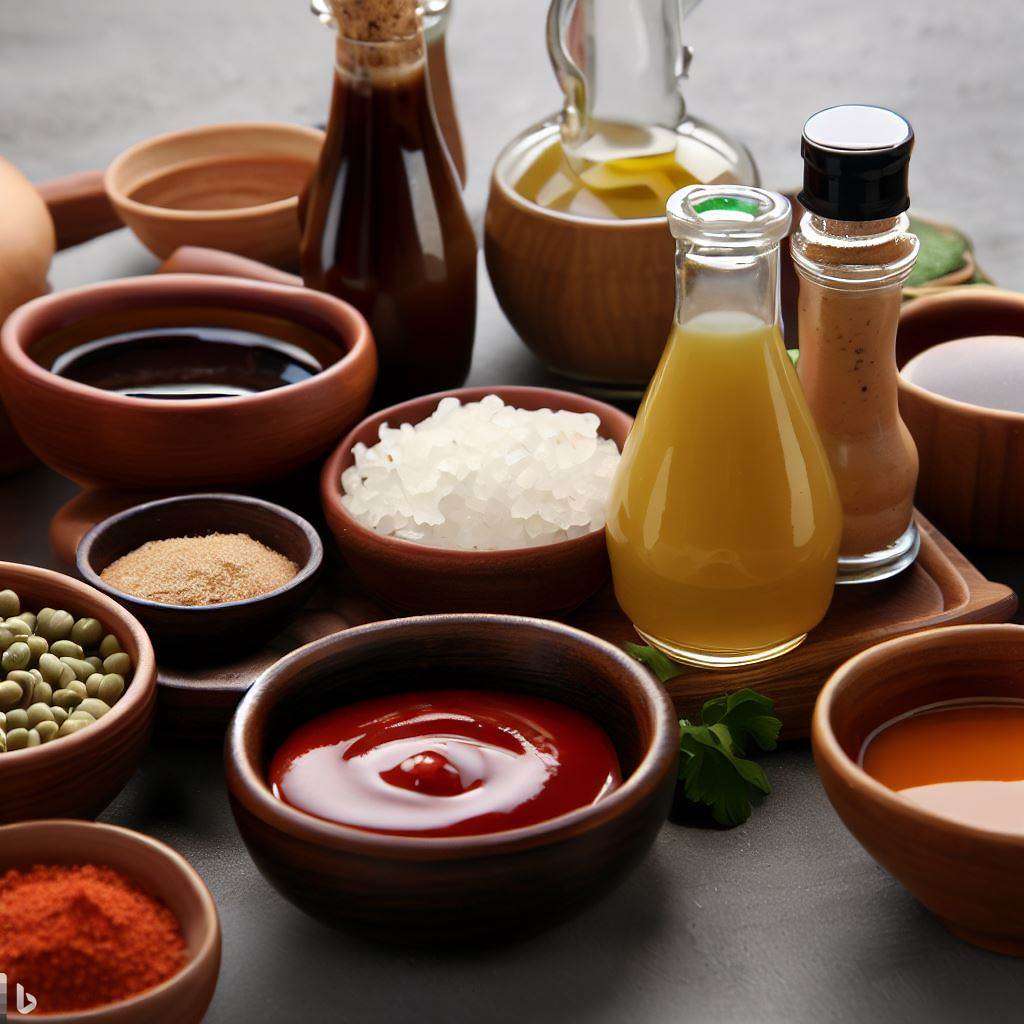
Including condiments and sauces can elevate the flavor of your meals and make healthy eating more enjoyable. However, it’s important to choose options that are lower in added sugars, unhealthy fats, and sodium. Here are some healthier condiments and sauces to consider adding to your grocery list:
- Mustard: Mustard is a low-calorie condiment that adds tang and flavor to sandwiches, dressings, and marinades. Look for options with simple ingredients and without added sugars or unhealthy oils.
- Hot Sauce: Hot sauces, such as sriracha or Tabasco, can add heat and flavor to dishes without adding significant calories. Check the labels for low-sodium options.
- Salsa: Salsa is a versatile condiment made from tomatoes, onions, peppers, and other flavorful ingredients. It can be used as a dip, topping for grilled meats or fish, or as a flavor booster in various recipes.
- Guacamole: Guacamole made with fresh avocados, lime juice, and spices is a healthy and flavorful choice. Use it as a dip, spread, or topping for salads, tacos, or sandwiches.
- Hummus: Hummus is a creamy and nutritious dip made from chickpeas, tahini, lemon juice, and garlic. It can be enjoyed with raw vegetables, whole grain crackers, or used as a spread in wraps and sandwiches.
- Greek Yogurt: Greek yogurt can be used as a healthier alternative to mayonnaise or sour cream in various recipes. It adds creaminess and tang without excessive calories or unhealthy fats.
- Tomato Sauce: Opt for tomato sauces with simple and natural ingredients, without added sugars or excessive sodium. Use it as a base for pasta dishes, pizzas, or as a flavoring in casseroles and stews.
- Low-Sodium Soy Sauce or Tamari: Soy sauce or tamari can add depth and umami flavor to stir-fries, marinades, and Asian-inspired dishes. Choose low-sodium options to reduce your sodium intake.
- Vinegar: Vinegar like balsamic, apple cider, or red wine vinegar can enhance the flavor of salads, roasted vegetables, and marinades. They add acidity without many calories or unhealthy additives.
- Pesto: Homemade or store-bought pesto made with fresh herbs, nuts, olive oil, and Parmesan cheese can be a flavorful addition to pasta dishes, and roasted vegetables, or used as a spread.
Tips
When selecting condiments and sauces, read the labels and choose options with minimal added sugars, unhealthy fats, and sodium. Be mindful of portion sizes and consider making your own homemade versions when possible, as it allows you to control the ingredients and flavors.
Download or print our handy Beginners Healthy Eating Grocery List here….
Healthy Snacks

Choosing healthy snacks can help maintain energy levels, provide essential nutrients, and prevent overeating during meals. Here are some ideas for healthy snacks to add to your grocery list:
- Fresh Fruit: Grab a piece of whole fruit like apples, bananas, oranges, berries, or grapes. They are packed with vitamins, minerals, and fiber.
- Raw Vegetables: Cut up raw vegetables such as carrots, cucumbers, bell peppers, and cherry tomatoes. Pair them with hummus, guacamole, or Greek yogurt dip for added flavor.
- Nuts and Seeds: Choose unsalted or lightly salted varieties of almonds, walnuts, cashews, pistachios, pumpkin seeds, or sunflower seeds. They provide healthy fats, protein, and fiber.
- Greek Yogurt: Opt for plain Greek yogurt and add your own toppings like fresh fruits, nuts, or a drizzle of honey. Greek yogurt is high in protein and can keep you feeling full.
- Rice Cakes or Whole Grain Crackers: Choose whole grain rice cakes or crackers made with whole wheat, oats, or seeds. Pair them with nut butter, avocado, or a slice of low-fat cheese.
- Hard-Boiled Eggs: Hard-boiled eggs are a portable and protein-rich snack. They can be enjoyed on their own or paired with whole-grain crackers or sliced veggies.
- Homemade Trail Mix: Make your own trail mix using a combination of unsalted nuts, seeds, dried fruits, and a small amount of dark chocolate for a sweet treat. Be mindful of portion sizes.
- Veggie Sticks with Hummus: Cut up celery, carrots, bell peppers, or cucumber sticks and enjoy them with a serving of hummus. This combination provides fiber, vitamins, and minerals.
- Smoothies: Blend together a combination of fruits, vegetables, Greek yogurt, and a liquid like water or unsweetened almond milk to create a nutritious and refreshing snack.
- Air-Popped Popcorn: Choose plain air-popped popcorn or lightly seasoned varieties without excessive added butter or salt. It’s a whole-grain snack that can satisfy your craving for something crunchy.
Tips
Remember to practice portion control when enjoying snacks and listen to your body’s hunger and fullness cues. Keep in mind that individual dietary needs and preferences may vary, so choose snacks that align with your personal health goals and taste preferences.
Download or print our handy Beginners Healthy Eating Grocery List here….
Healthy Beverages

Choosing healthy beverages is an important part of maintaining a balanced and nutritious diet. Here are some healthy beverage options to consider adding to your grocery list:
- Water: Staying hydrated is crucial for overall health. Make water your primary beverage choice and aim to drink an adequate amount throughout the day. You can infuse water with slices of fruits, vegetables, or herbs for added flavor.
- Herbal Tea: Herbal teas, such as chamomile, peppermint, or ginger, are caffeine-free and can be enjoyed hot or cold. They offer a variety of flavors and potential health benefits.
- Green Tea: Green tea is rich in antioxidants and has been associated with numerous health benefits. Opt for unsweetened varieties and enjoy it hot or iced.
- Unsweetened Coffee: Black coffee can be a part of a healthy diet in moderation. Avoid adding excessive sugar, syrups, or creamers. Consider adding a splash of unsweetened almond milk or enjoying it black.
- Unsweetened Plant-based Milk: If you prefer non-dairy milk, choose unsweetened options such as almond milk, soy milk, or oat milk. Check the ingredients and avoid those with added sugars or unhealthy additives.
- Vegetable Juice: Look for low-sodium vegetable juices or consider making your own by blending fresh vegetables. Vegetable juices can provide a concentrated source of vitamins and minerals.
- Fruit Infused Water: Enhance the flavor of water by infusing it with slices of fresh fruits like lemon, lime, berries, or cucumber. It adds a hint of natural sweetness without added sugars.
- Smoothies: Blend together a combination of fruits, vegetables, Greek yogurt, and a liquid base like water or unsweetened almond milk to create a nutritious and filling smoothie.
- Sparkling Water: Sparkling water can be a refreshing alternative to sugary sodas or other carbonated drinks. Look for unsweetened and naturally flavored options.
- Homemade Fruit and Vegetable Juices: Consider making your own fresh fruit and vegetable juices using a juicer or blender. This way, you can control the ingredients and avoid added sugars or preservatives.
Tips
Remember to be mindful of added sugars, artificial sweeteners, and excessive caffeine when choosing beverages. It’s important to read labels, opt for unsweetened or naturally flavored options, and be aware of portion sizes. Limit your intake of sugary drinks, sodas, energy drinks, and excessive amounts of fruit juices. Prioritize water and other healthier beverage options to stay hydrated and support your overall well-being.
Download or print our handy Beginners Healthy Eating Grocery List here….
Healthy Eating
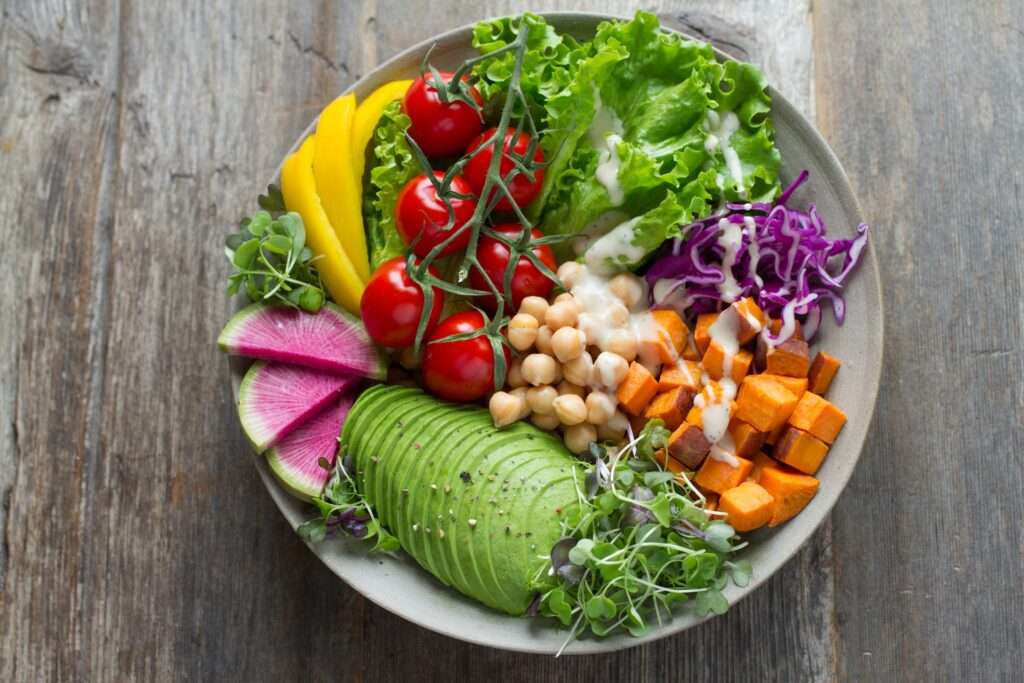
Beginners Healthy Eating Grocery List
Produce:
- Fresh fruits (such as apples, bananas, berries, oranges, and grapes)
- Fresh vegetables (such as leafy greens, broccoli, cauliflower, carrots, bell peppers, and cucumbers)
- Herbs (such as basil, cilantro, parsley, and mint)
Protein:
- Lean meats (such as chicken breast, turkey breast, and lean cuts of beef)
- Fish (such as salmon, tuna, and trout)
- Eggs
- Greek yogurt
- Tofu or tempeh
- Legumes (such as chickpeas, lentils, and black beans)
Whole Grains:
- Whole wheat bread or wraps
- Brown rice
- Quinoa
- Whole grain pasta
- Oats
Dairy or Dairy Alternatives:
- Low-fat milk or unsweetened plant-based milk (such as almond milk or oat milk)
- Greek yogurt (low-fat or non-fat)
- Cottage cheese (low-fat or non-fat)
Healthy Fats:
- Avocado
- Nuts (such as almonds, walnuts, and cashews)
- Seeds (such as chia seeds, flaxseeds, and pumpkin seeds)
- Olive oil
Canned Goods:
- Canned beans (such as black beans, kidney beans, and chickpeas)
- Canned tuna or salmon (packed in water)
Frozen Foods:
- Frozen fruits (such as berries, mangoes, and pineapple)
- Frozen vegetables (such as mixed vegetables, spinach, and broccoli)
Snacks:
- Raw nuts and seeds
- Rice cakes
- Popcorn (air-popped)
- Hummus and whole wheat crackers
- Nut butter (such as peanut butter or almond butter)
- Dark chocolate (70% cocoa or higher)
Beverages:
- Water
- Herbal tea
- Green tea
- Sparkling water
Other Essentials:
- Garlic
- Onions
- Low-sodium vegetable or chicken broth
- Herbs and spices (such as black pepper, turmeric, cinnamon, and paprika)
- Natural sweeteners (such as honey or maple syrup)
Tips
Remember to personalize the list based on your dietary preferences, any specific dietary restrictions, and your cooking abilities. Also, aim to prioritize whole, unprocessed foods and read food labels to check for added sugars, unhealthy fats, and excessive sodium. Planning your meals in advance can help ensure that you have the necessary ingredients on hand for healthy and balanced meals throughout the week.
Download or print our handy Beginners Healthy Eating Grocery List here….
